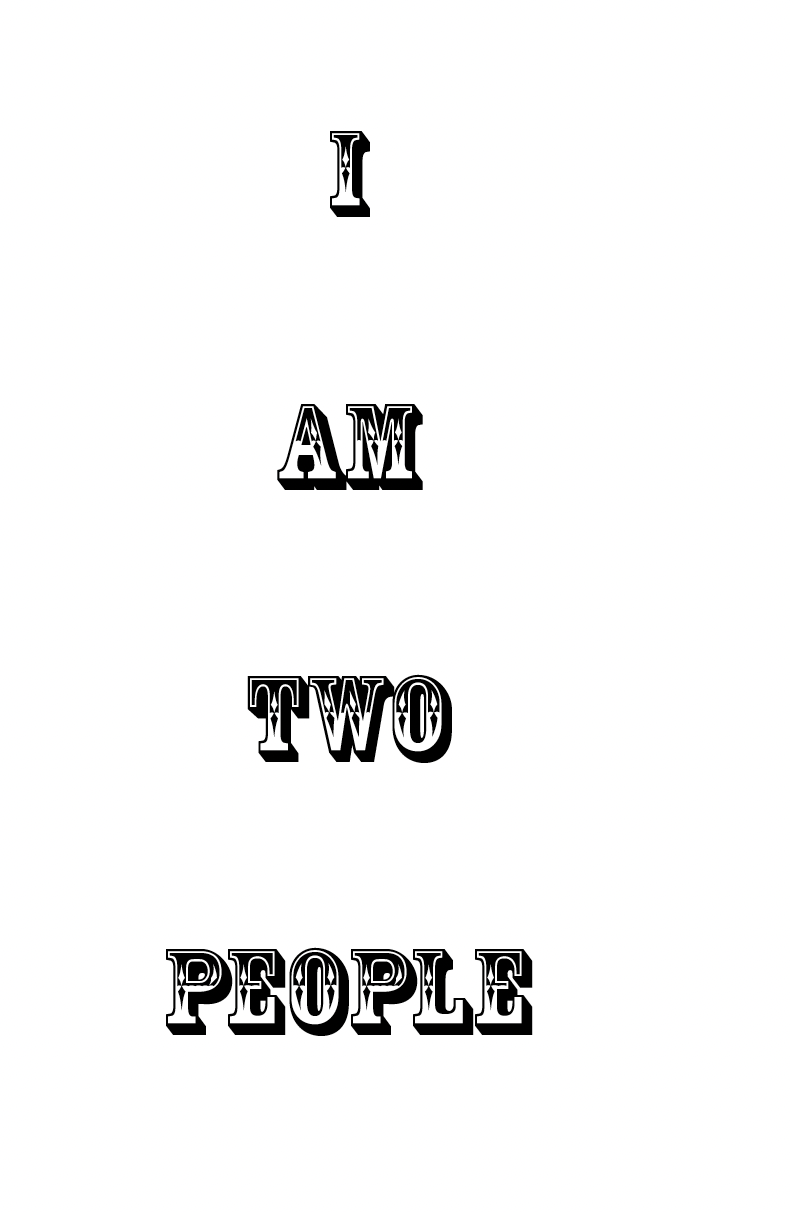BOOK CHAPTER
Connelly, Heather. (2018) Beyond representation: Translation Zone(s) and intersemiotic translation. Campbell., M and Vidal., R (eds.). Translating across Sensory and Linguistic Borders: Intersemiotic Journeys between Media. Palgrave Macmillan. (pp. 217-245).
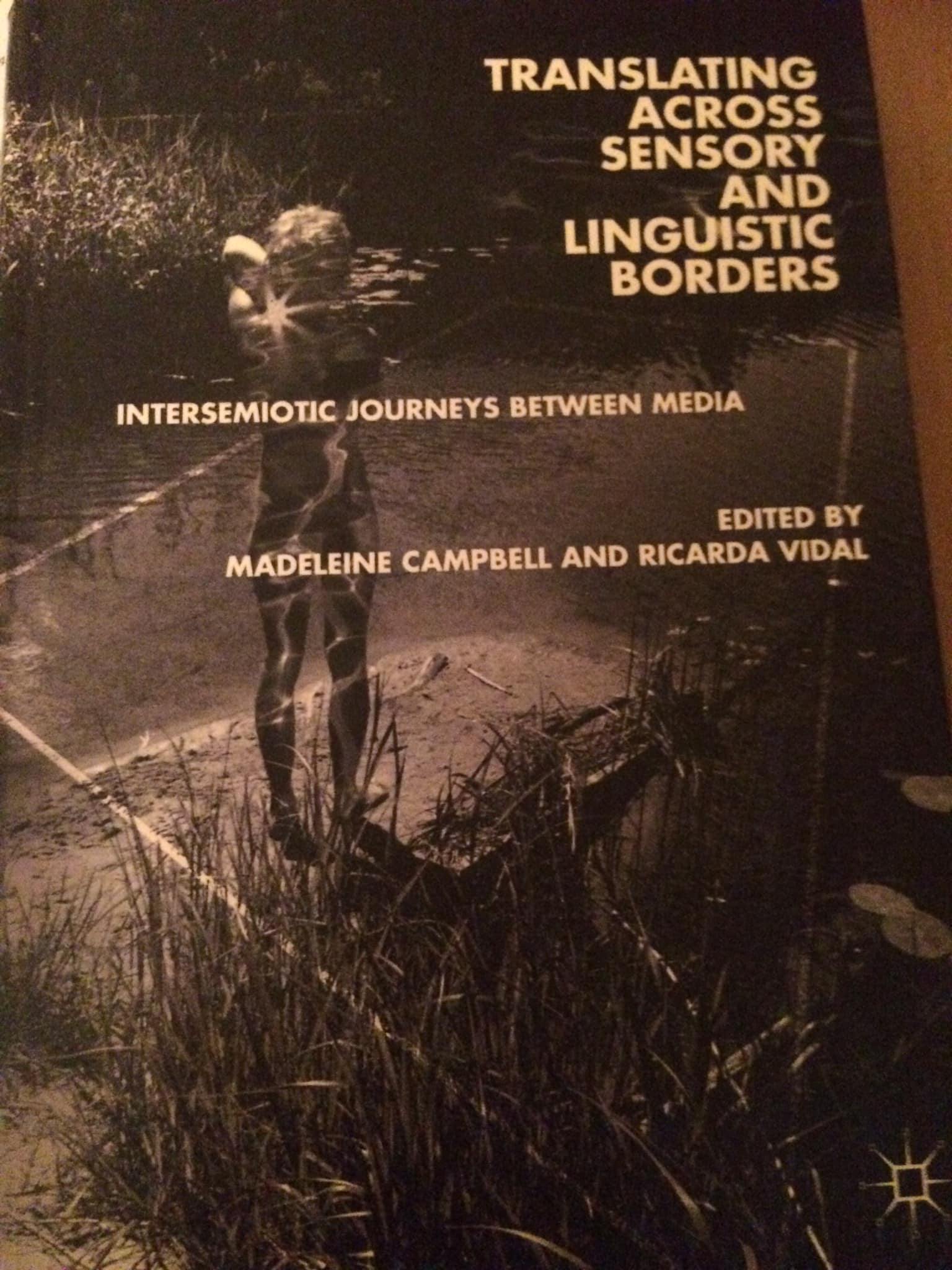
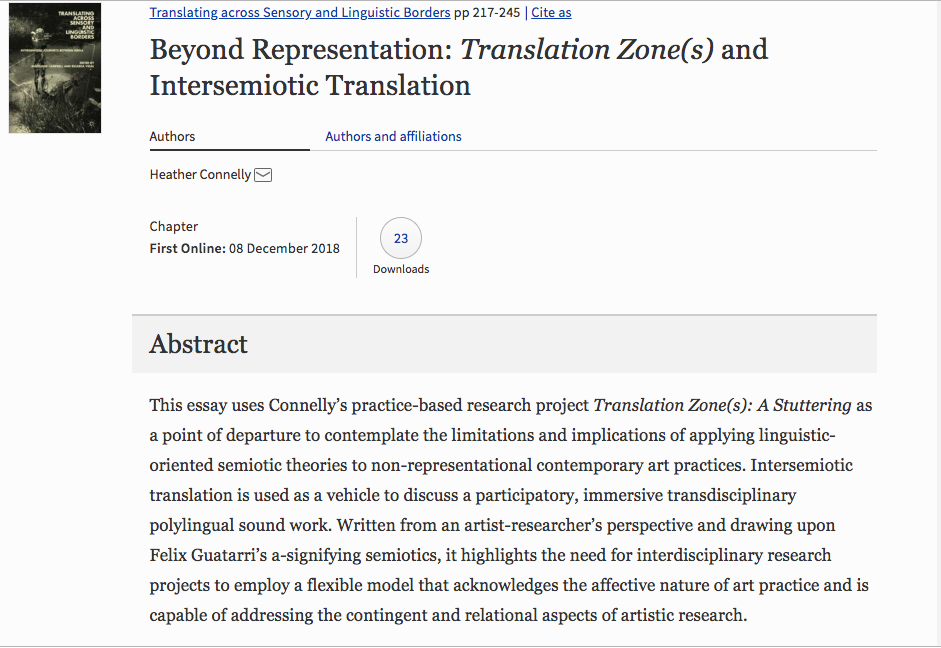
‘for anyone interested in intersemiotic translation, this is a book that takes the debate to a whole new level: not only describing radical rewritings of literary and other texts in a range of exotic media, but also enacting them. Achieving a fine balance between radical critique of mainstream epistemology and respectful deference to its values, this may prove to be a game changer.’ Karen Bennett NOVA, University of Lisbon, Portugal.
https://www.palgrave.com/br/book/9783319972435
OPEN ACCESS JOURNAL ARTICLE:
Connelly, Heather. (2018) Translation Zone(s): an experimental approach to linguistic hospitality; ed. Segal, N. & Maryl, M. De Gruyter.
Open Cultural Studies
Available at: https://www.degruyter.com/view/j/culture.2018.2.issue-1/culture-2018-0015/culture-2018-0015.xml
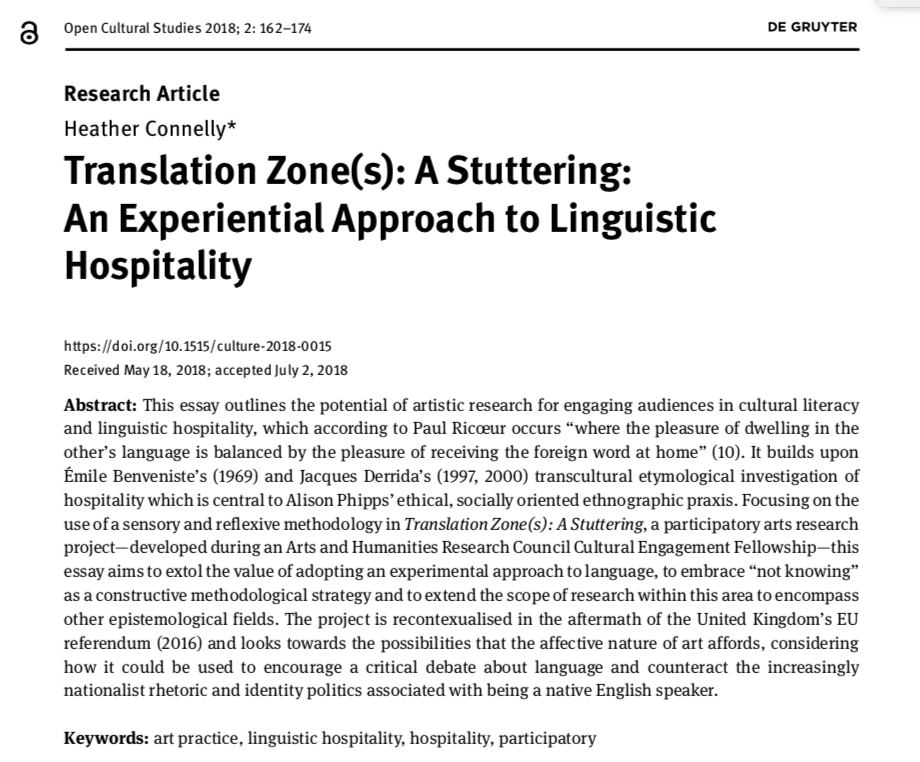
PRACTICE BASED PHD:
Connelly, Heather. (2015) Speaking through the voice of another: how can art practice be used to provoke new ways of thinking about the transformations and transitions that happen in linguistic translation? PhD Thesis. Loughborough University (2015)
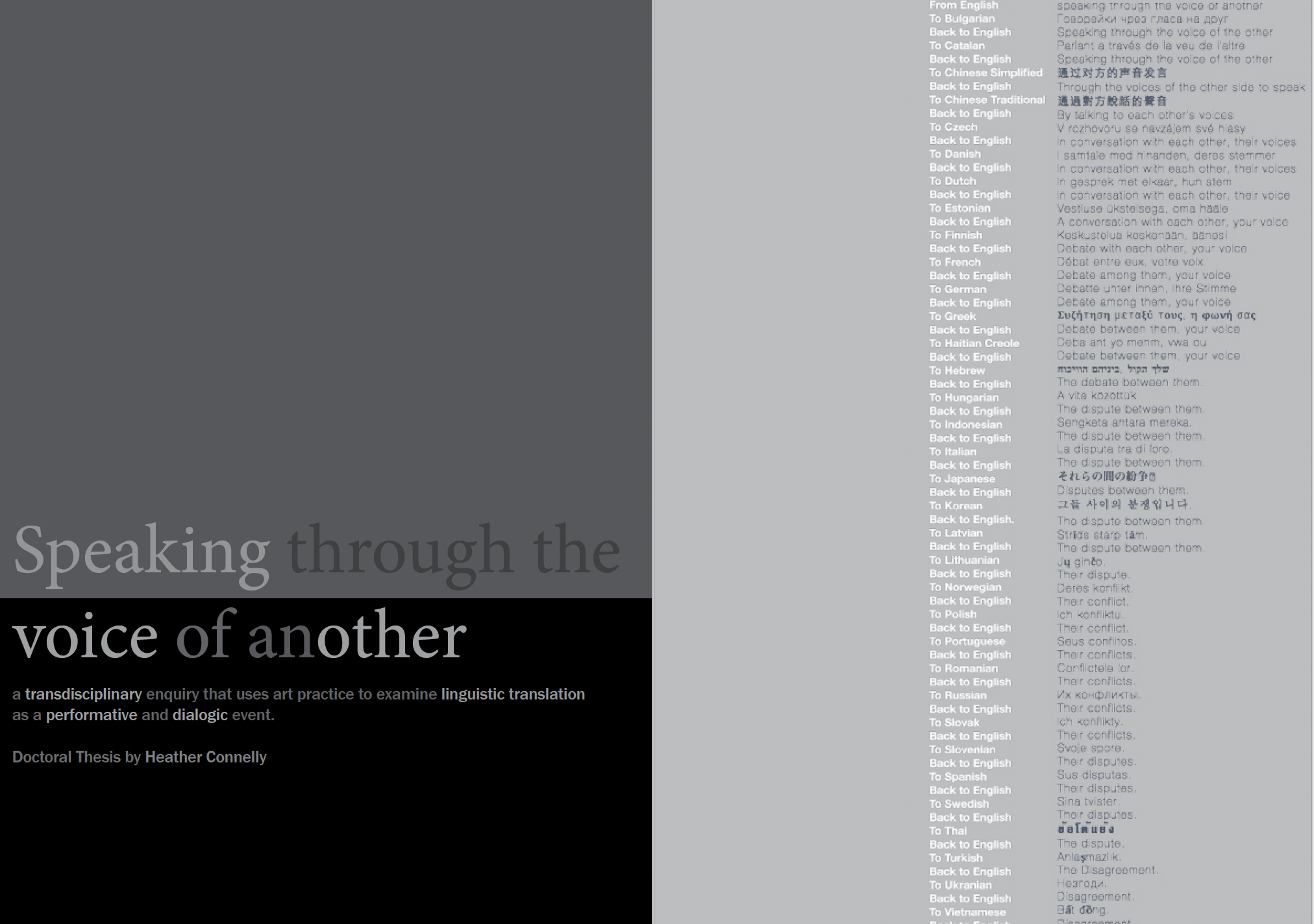
Speaking through the voice of another is a practice-based PhD that employs art practice to interrogate translation (as a textual and verbal practice). It uses linguistic translation as both the subject and the method to make multimedia artworks (text, sound, performance and events) that examine and analyse the translation process itself. The research has been conducted from my own subjective position, as an artist and monolingual speaker (a translation user rather than translation professional), investigating translation as a dialogic, subjective, embodied and performative phenomena. It adopts a self-reflexive methodology that places equal value in theoretical and experiential knowledge and proposes that an artist-led inquiry challenges assumptions, translation protocols, conventions and normative behaviour. The artists and artworks discussed in the thesis examine the translators /translation s agency and its linguistic performativity; exploiting it s creative potential as an artistic process/medium and amplifying its pivotal role within the expanding global art world. This transdisciplinary approach has resulted in the creation of translation zones – works and events devised to engage monolingual and multilingual individuals, professional translators, practitioners and public(s) in the process of translation – that offer an alternative perspective on translation (to research carried out within Translation Studies). Consequently, generating new knowledge that contributes to our understanding of translation and art and beyond both disciplines, creating a new transdisciplinary genre of art-and-translation. The artworks are an integral part of the thesis submission; samples and documentation of these are accessible within the full interactive PDF ersion. The layout of the thesis has been specifically designed to ease communication of the research, it uses various visual cues to distinguish between different types of information and to demonstrate my research praxis; the continual movement between theory and practice.
